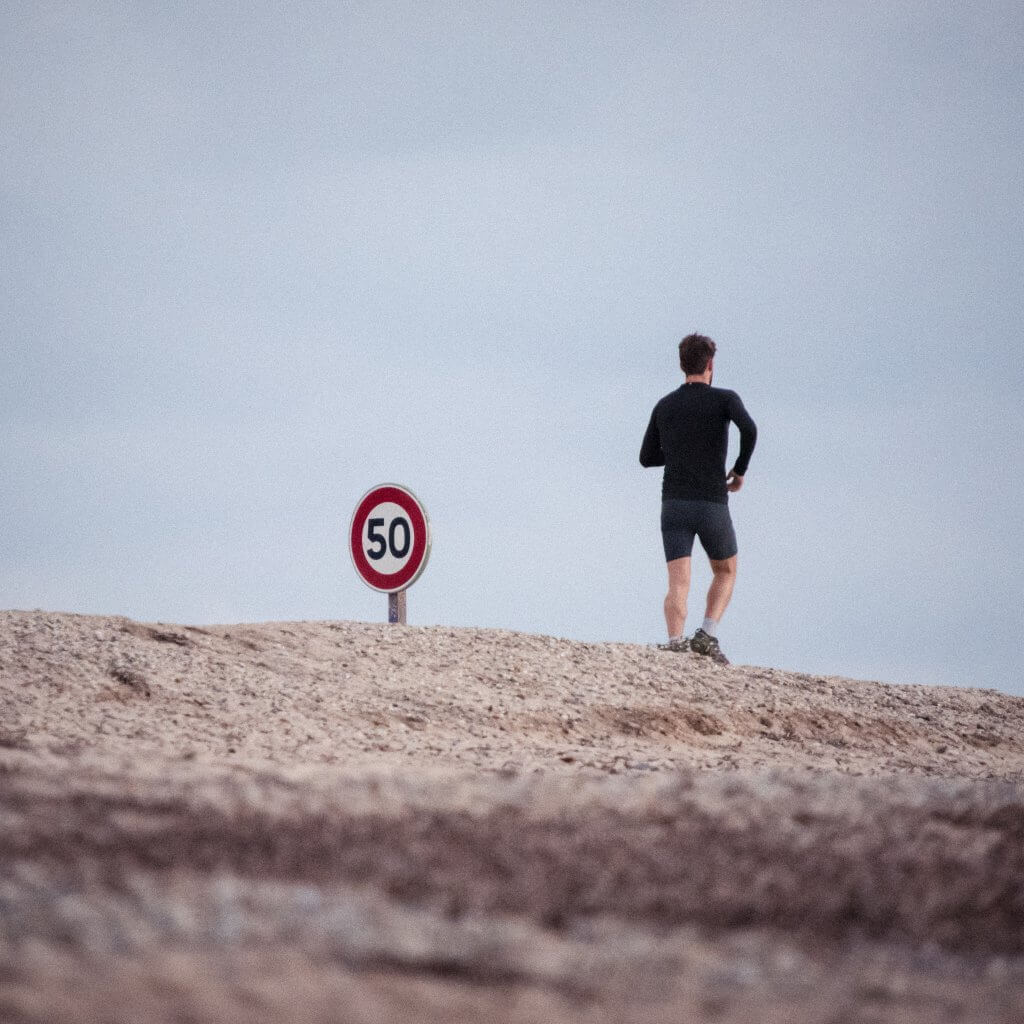Tips For Going From Marathon Finisher To Ultra Runner

After completing 26.2 miles, the runner officially proved to themselves they can go the distance. But becoming a marathoner might only be the beginning for those who now want to tackle a larger challenge, an ultra.
Making the step from a marathoner to becoming an ultrarunner is a leap that can quite a big one for those who don’t know what to expect. However, running even longer distance is doable for just about any runner who is committed and puts in the work.
Here are some tips from going from a marathon finisher to an ultrarunner.
Ultras: What Is It And How Long?
Ultramarathons are races that are technically anything longer than a marathon distance of 26.2 miles. When it comes to races, ultras start at 50k (31.07 miles) and include the 50 mile, 100 mile, 100k, and other races that last for hours or days.
These races are typically done on the trails. Ultras are definitely a physical feat since the runner must learn how to continue to run even when their legs are beyond tired. But ultrarunning is more about the mental strength of an athlete. It takes willpower, focus and drive to be able to succeed.

Ultra Running Tips: Slowing Down
Training for a marathon consisted of slowly increasing the mileage over the course of weeks. This included one long run per week that added more miles each week before tapering and race day. The strategy is that a runner doesn’t need to finish 26.2 miles to be able to finish a marathon. The bad news is for ultramarathons, runners need more than one long run per week.
Instead of tempo runs and other speed work, the main focus when training for an ultra is logging in the distance. And while it’s not smart to run the full distance desired, training includes running at least 20 miles at least once.
The good news was runners get to slow the pace down and the mileage increases. The same applies to ultra running. While some have a need for speed, shorter distances might be more suited for this type of runner. Distance running—and we are talking real distance like 50k and up—takes a more “slow and steady finishes the race” approach.
In fact “slowing down” is the best tip runner Eva Lencler told RunnerClick. “Yes, take it easy and walk when needed,” another runner, Jessica Anne added.
The main difference between running other distances and ultras is these are all about endurance compared to speed. Instead of looking to finish top three (generally speaking), most are just looking to finishing the race.

Eating More And Learning How To Fuel
Keep in mind that ultra runners need a whole lot more calories than a few gels during training runs and the race. In fact, aid stations at events include items like M&Ms, cookies, and chips. This differs a lot from marathon aid stations. That’s because runners are burning so many calories on the course that they need to get the max amount of calories back in.
But nutrition and fueling is an important aspect of training way before the race. Endurance athletes are recommended to follow a diet that consists of 60 percent carbs, 25 percent fat, and 15 percent protein. Runners need a balanced diet with at least one vegetable and fruit, a source of whole grain, as well as unsaturated fats and protein for each meal.
Eat two hours before a run. This gives the body enough time to digest and start breaking the food down into fuel. The general rule of thumb is a pre-run meal, during the run fuel, post-run fuel, and other meals throughout the day when not running.
Do not skip out on fuel during long runs—even when you don’t feel hungry or that you need it. Your body will start to run on empty and the runner will have to play catch up as to avoid hitting a wall. Get 100 calories an hour. This includes GUs, energy bites, foods like sweet potato cookies, bananas, and nuts.
As important as fuel is drinking water. Also, try replenishing salt with tabs like Nuun.
Ultra Running Tips: Gearing Up

Get used to running solo for long periods of time. During an ultramarathon race there could miles in between runners on the trails. And because these are longer trail races, there are lots fewer aid stations along the way. This means having the proper gear to be able to complete the course.
Gear for ultra running first and foremost includes a hydration pack or vest. This is the most popular way to carry water among ultra runners. Hydration packs have the space to carry GU, chews, or other nutrition along with other items like body guide, sunscreen, extra socks and a headlamp.
Other ultra running gear to get includes trail running shoes, the right socks, outer shells (for rain or cooler weather), and trekking poles.
Other Tips
Remember to continue to cross train while training for an ultra. Endurance races require great physical strength, so work out all the major muscle groups. Go for hikes to get used to being on trails.
It’s a good idea to make the jump to an ultra runner after having a few marathons under the belt. That’s because the first marathon allows the runner to know what to expect. Moving forward to run more of them can allow the runner to get better at the distance. However, there are always exceptions to the rules. Runners know they are ready to become an ultra runner when they have the mental strength to persevere.
Sources
- , Everything to Know About Ultra-Marathons, Fitness Blog
- , 4 Primary Differences Between Marathon and Ultra Marathon Training, Fitness Website
- , A Refresher Nutrition Course for Ultrarunners , Ultra Running Website
- , Long Run Meal Plan + Ultramarathon Training Week 10, Blog
- , Ultramarathon Nutrition, Running Website
Latest Articles
 Is Running on a Treadmill Easier Than Running Outside?Runners have their own preferences, whether it is treadmill running, running outside on the road, or exploring trails. So...
Is Running on a Treadmill Easier Than Running Outside?Runners have their own preferences, whether it is treadmill running, running outside on the road, or exploring trails. So... Is It OK to Use Trail Running Shoes on the Road?While trail running shoes can be used on roads, especially in situations where a runner encounters mixed terrains or pref...
Is It OK to Use Trail Running Shoes on the Road?While trail running shoes can be used on roads, especially in situations where a runner encounters mixed terrains or pref... How to Fix Sore Quads After Running?Rest, ice, gentle stretching, and over-the-counter pain relievers can help soothe sore quads after running. Also, ensure ...
How to Fix Sore Quads After Running?Rest, ice, gentle stretching, and over-the-counter pain relievers can help soothe sore quads after running. Also, ensure ... 10 Fruits With The Most Electrolytes to Replace Sports DrinksThese fruits are high in electrolytes such as potassium, magnesium, and calcium, essential for hydration, muscle function...
10 Fruits With The Most Electrolytes to Replace Sports DrinksThese fruits are high in electrolytes such as potassium, magnesium, and calcium, essential for hydration, muscle function...

